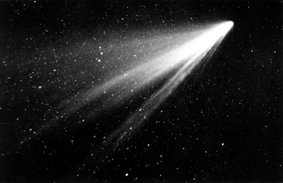Markus Keibel
dal 23/5/2008 al 4/7/2008
Segnalato da
23/5/2008
Markus Keibel
Magnus Muller, Berlin
One evolutionary way to see. The artist uses medias as photography, language and daily objects as a source of inspiration for his glass works and installations. His main interest is the notion of humanity not as an abstract meaning but as a question: How can we talk about the human being facing it in a concrete way?

magnus muller is pleased to announce the second solo exhibition of
Berlin-based German artist Markus Keibel entitled "one evolutionary way to
see". Markus Keibel uses medias as photography, language and daily objects
as a source of inspiration for his glass works and installations. His main
artistic interest is the notion of humanity not as an abstract meaning but
as a question: How can we talk about the human being without abstracting,
but facing it in a concrete way? Keibel, however, is not interested in the
individual itself, but in the relationship between the individuals to each
other, their communication modes and their perception. Another inspiration
to his minimal installations are current social discourses. In the execution
he finds a very distinct and reduced artistic language. Constanze Korb
Mark Gisbourne on Markus Keibel
....I thought of a labyrinth of labyrinths,
one sinuous spreading labyrinth that would encompass
the past and the future and in some way involves the stars.[1]
Like Ts'ui Pên the imagined Chinese governor in Borges's famous essay The
Garden of Forking Paths, the escapist dream and projection of the labyrinth
is always an attempt and/or imagined realisation of the infinite that is
outside of time. Time and the immediacy of successive events is foreign to
the introspection of a labyrinthine consciousness. Hence the labyrinth
stands for contraries, the manufactured working of a material mind (which is
limited), and an immaterial consciousness (seemingly unlimited). It can be
made visible as structure, and is just as readily made invisible as
transparency a material construction and/either/or a psychological
projection. The fallacy that often ensues from this idea of the labyrinth,
is that it is a self-contained instance of imagination and pure
consciousness. For the labyrinth demonstrates through its metaphor an
introspective sense of mental consciousness, rather than an actual space of
worldly material interaction and involvement.
However, as Markus Keibel's latest installation intentionally suggests, the
cosmological reality (material/immaterial and physical/mental) as a true
infinite cannot be so easily excluded. In what is a constructed labyrinth of
glass, a cosmological source namely 'a meteorite' violates what merely
aspires to be an enclosed labyrinthine space. In consequence the meteorite
brings forth, in a deliberately violent manner, an unpredictable and
uncomfortable universal presence. The optical passages and glass walls are
transgressed by the physical intervention of an alien entity. It is the
'other' (world in fact another world) that confronts the delusions of the
labyrinth's self-containment. Constructed in a gallery space, a site of
display, the glass labyrinth reveals it transparency in a doubled sense, an
enclosed space, but nonetheless one that can be seen at two different
levels. Consciousness is invaded by the material world of otherness.
The
meteorite's astronomic entry from outside the gallery space through the
window and the glass panes not only mirrors a particular and adopted
trajectory, but is a sharply disruptive mechanism that challenges the idea
of a purely introspective consciousness of suggested isolation. It comes to
rest at the centre of the transparent space, locating an alien entity (the
other) at the very heart of the labyrinthine metaphor. In short at the
centre of consciousness. The transparent fragility of the glass is contested
by the intense weight of the meteorite that has pressed upon it, shattered
and fragmented its sense of purposive hermetic closure. A constructed and
transparent contradiction of intimacy that Keibel makes clear by creating a
hidden and unfamiliar point of access to the labyrinth and gallery space.
The installation takes the viewer to the core of mind and matter and its
binary paradox. It exposes the inherent theatre-events of consciousness and
familiar delusions. We are made party to a millennial "past and future"
occurrence, that "in some way involves the stars."
[1] Jorge Luis Borges, 'The Garden of the Forking Paths', Eng. trans.,
Donald A. Yates, in, Labyrinths: Selected Stories & Other Writings, New
York and London, New Directions, 1964 (and subsequent editions), pp. 19-29
(p. 23)
Opening: Saturday, May 24th, 6pm 9pm
Magnus Muller
Weydingerstr. 10/12 - Berlin
Free admission



